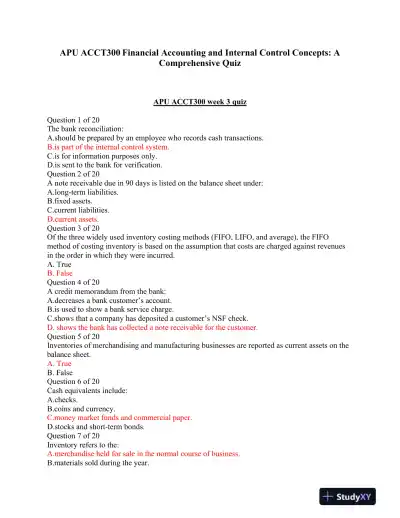Page 1

Loading page ...
This quiz evaluates knowledge of financial accounting concepts and internal control procedures, focusing on their application in business operations.

Loading page ...
This document has 4 pages. Sign in to access the full document!